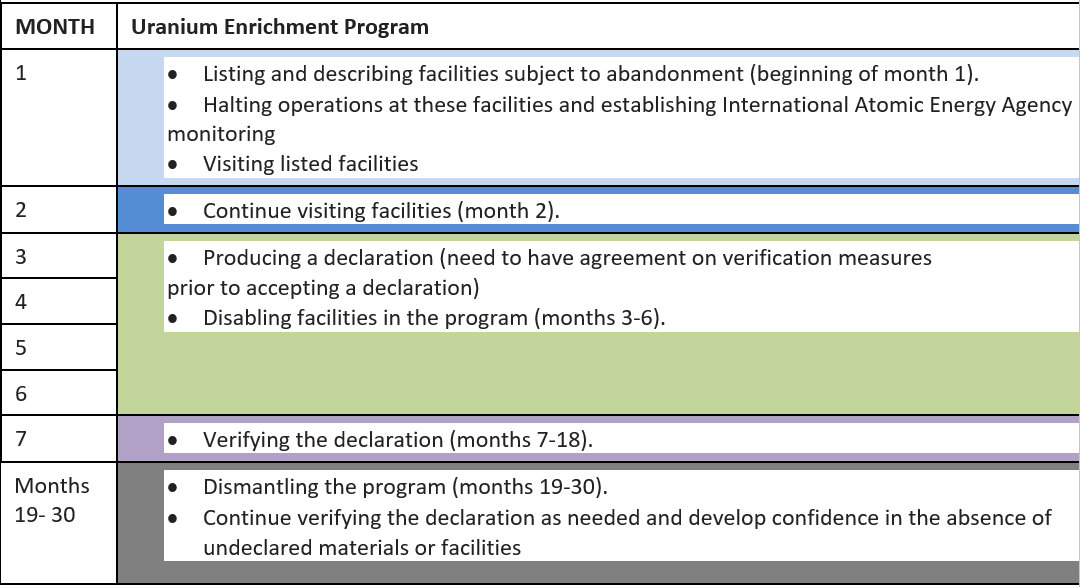Reports
Technical Note on a Timeline for North Korean Denuclearization
by Institute for Science and International Security
May 29, 2018
On May 28, 2018, the New York Times reported on a technical roadmap for North Korean denuclearization written by Stanford University professor and scientist Siegfried S. Hecker and colleagues Robert L. Carlin and Elliot A. Serbin. While we greatly respect the work of Dr. Hecker and colleagues, we disagree on the up to 15-year timeline put forth for completing full denuclearization. Our assessments are based on verified dismantlement in other countries. If North Korea agrees to denuclearize and to cooperate fully, admittedly big “ifs,” then verified dismantlement of the key parts of its nuclear weapons program can happen in parallel and be accomplished in as little as about two years.
Gaining assurance that North Korea is not hiding relatively small but significant amounts of plutonium, enriched uranium, or nuclear weapons will take longer than two years and will likely fall to the International Atomic Energy Agency (IAEA) to handle as part of bringing North Korea into compliance with the Nuclear Non-Proliferation Treaty as a non-nuclear weapons state. This whole process could take several more years, as the IAEA insists on accounting for even grams of nuclear explosive materials, as it should. Decommissioning operating reactors and plutonium separation plants will also take years longer.
But within a few years, all the declared nuclear weapons and stocks of plutonium and enriched uranium could be verifiably eliminated, and all key facilities identified and rendered unable to operate. Moreover, the verification process can include a sufficient estimate of the amount of plutonium and enriched uranium North Korea has produced, allowing a first order check on whether North Korea has declared all its nuclear weapons. Of course, this process could take longer, but such a process should not be structured in a way that invites North Korea to go slowly and delays the date when North Korea demonstrates it intends to get rid of its nuclear weapons. The past two major negotiations with North Korea are a cautionary tale for avoiding a drawn-out process, where the most difficult decisions are left to the future.
A more realistic, conservative estimate of verified dismantlement of a North Korean uranium enrichment program from start to finish could take 30 months. A recent public event held by David Albright included a discussion of dismantling the North Korean uranium enrichment program and offered the timeline in the figure below.
This estimate was originally prepared for a government in 2011 as part of a 100-page confidential study on this issue, where we received permission to release portions of the study. This process and timeline follows the philosophy of the Six Party Talks in the 2000s. Today, with past experience, it makes sense to front load the process and accomplish the major steps even more quickly.
Past experience would suggest that the verified dismantlement of the uranium enrichment program can be expected to take longer than verifiably dismantling either the plutonium or the nuclear weaponization programs, including the dismantling of any nuclear weapons. In any case, the denuclearization work on all the major nuclear weapons programs should proceed in parallel, unlike in the past when only the plutonium program was focused on.
North Korea should be expected to cooperate and the denuclearization process should be built around its cooperation on providing robust declarations and granting inspector access to sites and key individuals. If North Korea is not willing to cooperate and demonstrate that cooperation, no amount of time will be enough to reduce and verifiably dismantle its nuclear weapons program. By needlessly drawing out the process, it invites the types of failures that we have seen before.
Potential timeline for Uranium Enrichment Program’s (UEP’s) declaration, verification, and dismantlement


 twitter
twitter